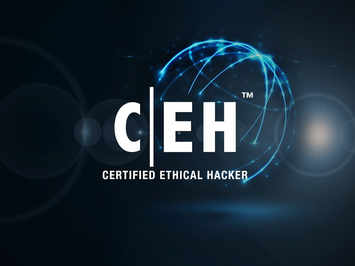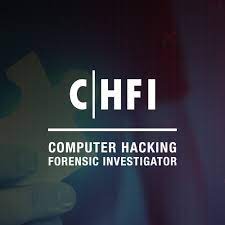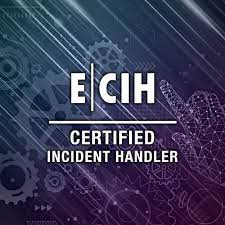DURATION
Minimum 100 Hrs
ELIGIBILITY
Basic Knowledge of Software, Database and Networking
Batches
Weekdays And Weekends
Fees
Rs. 40000 INR
Awarded as Best Ethical Hacking Trainer By Computer Society Of India
A premier cyber security training facility, Macksofy offers a comprehensive range of courses as well as job placement assistance for both professionals and recent graduates wishing to better their careers. Macksofy technologies Certified Ethcial Hacker - CEH v12 course in Mumbai city where you will learn the most recent hacking tools, methods, and strategies used by hackers and information security experts to legally breach a business with Certified Ethical Hacker CEH v12.
The phases of ethical hacking, numerous attack routes, and preventative responses are thoroughly explained by CEH v12. You will learn how hostile hackers think and act, which will put you in a better position to build your security system and fend off assaults in the future. In order to reduce the chance of an incident, companies should tighten their system security controls by having a better understanding of system flaws and vulnerabilities.
In order to give you the chance to work toward demonstrating the necessary knowledge and abilities needed to do the job of an ethical hacker, CEH v12 was developed to combine a hands-on environment and systematic procedure throughout every ethical hacking subject and methodology. You will encounter a completely different attitude about the duties and safety precautions needed.
Certified Ethical Hacker (CEH) V12 Course Outline
Module 01: Introduction to Ethical HackingCover the fundamentals of key issues in the information security world, including the basics of ethical hacking, information security controls, relevant laws, and standard procedures. |
Module 02: Foot printing and ReconnaissanceLearn how to use the latest techniques and tools to perform foot printing and reconnaissance, a critical pre-attack phase of the ethical hacking process. |
Module 03: Scanning NetworksLearn different network scanning techniques and countermeasures. |
Module 04: EnumerationLearn various enumeration techniques, such as Border Gateway Protocol (BGP) and Network File Sharing (NFS) exploits, and associated countermeasures. |
Module 05: Vulnerability AnalysisLearn how to identify security loopholes in a target organization’s network, communication infrastructure, and end systems. |
Module 06: System HackingLearn about the various system hacking methodologies—including steganography, steganalysis attacks, and covering tracks—used to discover system and network vulnerabilities. |
Module 07: Malware ThreatsGet an introduction to the different types of malware, such as Trojans, viruses, and worms, as well as system auditing for malware attacks, malware analysis, and countermeasures. |
Module 08: SniffingLearn about packet-sniffing techniques and how to use them to discover network vulnerabilities, as well as countermeasures to defend against sniffing attacks. |
Module 09: Social EngineeringLearn social engineering concepts and techniques, including how to identify theft attempts, audit human-level vulnerabilities, and suggest social engineering countermeasures. |
Module 10: Denial-of-ServiceLearn about different Denial of Service (DoS) and Distributed DoS (DDoS) attack techniques, as well as the tools used to audit a target and devise DoS and DDoS countermeasures and protections. |
Module 11: Session HijackingUnderstand the various session hijacking techniques used to discover network-level session management, authentication, authorization, and cryptographic weaknesses and associated countermeasures. |
Module 12: Evading IDS, Firewalls, and HoneypotsGet introduced to firewall, intrusion detection system, and honeypot evasion techniques; the tools used to audit a network perimeter for weaknesses; and countermeasures. |
Module 13: Hacking Web ServersLearn about web server attacks, including a comprehensive attack methodology used to audit vulnerabilities in web server infrastructures and countermeasures. |
Module 14: Hacking Web ApplicationsLearn about web application attacks, including a comprehensive web application hacking methodology used to audit vulnerabilities in web applications and countermeasures. |
Module 15: SQL InjectionLearn about SQL injection attack techniques, injection detection tools, and countermeasures to detect and defend against SQL injection attempts. |
Module 16: Hacking Wireless NetworksLearn about wireless encryption, wireless hacking methodologies and tools, and Wi-Fi security tools. |
Module 17: Hacking Mobile PlatformsLearn about mobile platform attack vectors, Android vulnerability exploits, and mobile security guidelines and tools. |
Module 18: IoT HackingLearn how to secure and defend Internet of Things (IoT) and operational technology (OT) devices and possible threats to IoT and OT platforms. |
Module 19: Cloud ComputingLearn different cloud computing concepts, such as container technologies and server less computing, various cloud-based threats and attacks, and cloud security techniques and tools. |
Module 20: CryptographyIn the final module, learn about cryptography and ciphers, public-key infrastructure, cryptography attacks, and cryptanalysis tools. |
Learn From The Masters
Incorporating Parrot Security OS
With a more streamlined user interface and a larger variety of general tools, Parrot Security OS exceeds Kali Linux in terms of performance on laptops and other low-powered devices.Re-Mapped to NIST/NICE Framework
The Protect and Defend (PR) job role category in the NIST/NICE framework is overlapping with other job roles, such as Analyze (AN) and Securely Provision, and CEH v12 is carefully linked to important Specialty Areas (SP).
Enhanced Cloud Security, IoT, and OT Modules
Cloud computing threats, IoT hacking techniques, and CSP's container technologies (like Docker and Kubernetes) are among the updated Cloud and IoT modules in CEH v12 (e.g. Shikra, Bus Pirate, Facedancer21, and more). This is essential as the world moves toward wider and more extensive cloud adoption.
Cloud−Based Threats
Businesses struggle to cut down on data theft incidents brought on by inadequately designed cloud systems while the market for cloud services is expected to grow to $354 billion by 2022. Cloud-based attacks grew by 630% just between January and April of 2020. Find out how to recognise, avoid, and respond to cloud-based attacks with CEH v12.
IoT Threats
By 2023, there will likely be 43 billion IoT-connected gadgets on the planet, according to market projections. IoT ecosystems are becoming more complex as major internet firms like Amazon Web Services, Google, IBM, and Microsoft aggressively transition to private cloud services to support this rapid expansion. The CEH v12 training on how to protect against IoT-based attacks covers the most recent IoT hacking tools, including as Shikra, Bus Pirate, Facedancer21, and many others.
Operational Technology (OT} Attacks
Last year, the number of OT-related incidents in businesses increased by 2000%. You can acquire knowledge in OT, IT, and IIoT for the goal of safeguarding important company OT/IoT projects (industrial IoT). OT concepts like ICS, SCADA, and PLC are covered in CEH's advanced OT skills course, along with OT challenges, OT hacking tools, and OT network communication protocols like Modbus, Profinet, HART-IP, SOAP, CANopen, DeviceNet, Zigbee, Profibus, etc. The DNP3 protocol also covers remote access.
Modern Malware Analysis
In CEH v12, you may now find the newest malware analysis methods for ransomware, financial and banking malware, IoT botnets, OT malware analysis, Android malware, and more!
Covering the Latest Threats – Fileless Malware
As the number of fileless attacks increased, the security community began to voice concerns about these attacks. Fileless malware is a relatively new sort of malware attack, making it difficult for businesses to detect it with endpoint security software. The taxonomy of fileless malware threats, antivirus-bypassing fileless malware obfuscation techniques, script-based malware injection, phishing-based malware injection, and other topics are covered in this course. You can now learn numerous fileless malware attacks with corresponding defensive tactics using the CEH v12.
New Lab Designs and Operating Systems
The most recent version of CEH v12 includes new operating systems, including Windows Server 2019, Windows Server 2016, and Windows 10, all of which are equipped with firewalls, susceptible web applications, and domain controllers for hacking practise.
Increased Lab Time and Hands−on Focus
More than 50% of the CEH v12 course is committed to practical skills on actual shooting ranges through EC-Council laboratories. EC-Council is the industry leader in this regard.
Industry’s Most Comprehensive Tools Library.
The CEH v12 course comes with a library of the most modern tools required by security experts and pen testers globally.
Other Courses

CEH Masters
Certified Ethical Hacking Masters
We test your abilities with real-world challenges in a real-world environment, using labs and tools requiring you to complete specific ethical hacking challenges within a time limit, just as you would face in the real world!

CHFI
Certified Hacking Forensic Expert
EC-Council’s Certified Hacking Forensic Investigator (CHFI) is the only comprehensive ANSI accredited, lab-focused program in the market that gives organizations vendor-neutral training in digital forensics.

ECIH
EC Council Certified Incident Handler
E|CIH is a method-driven program that uses a holistic approach to cover vast concepts concerning organizational incident handling
